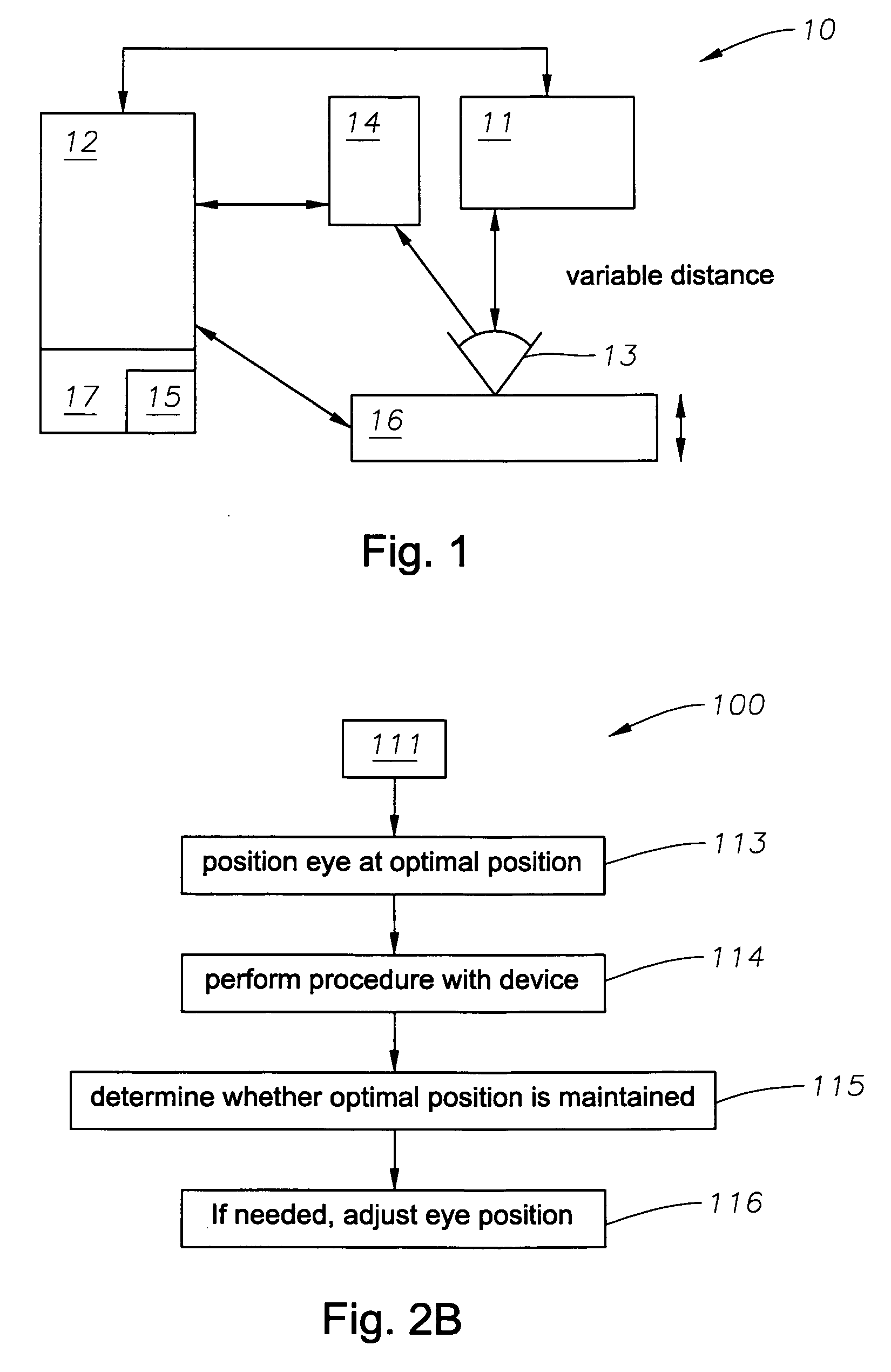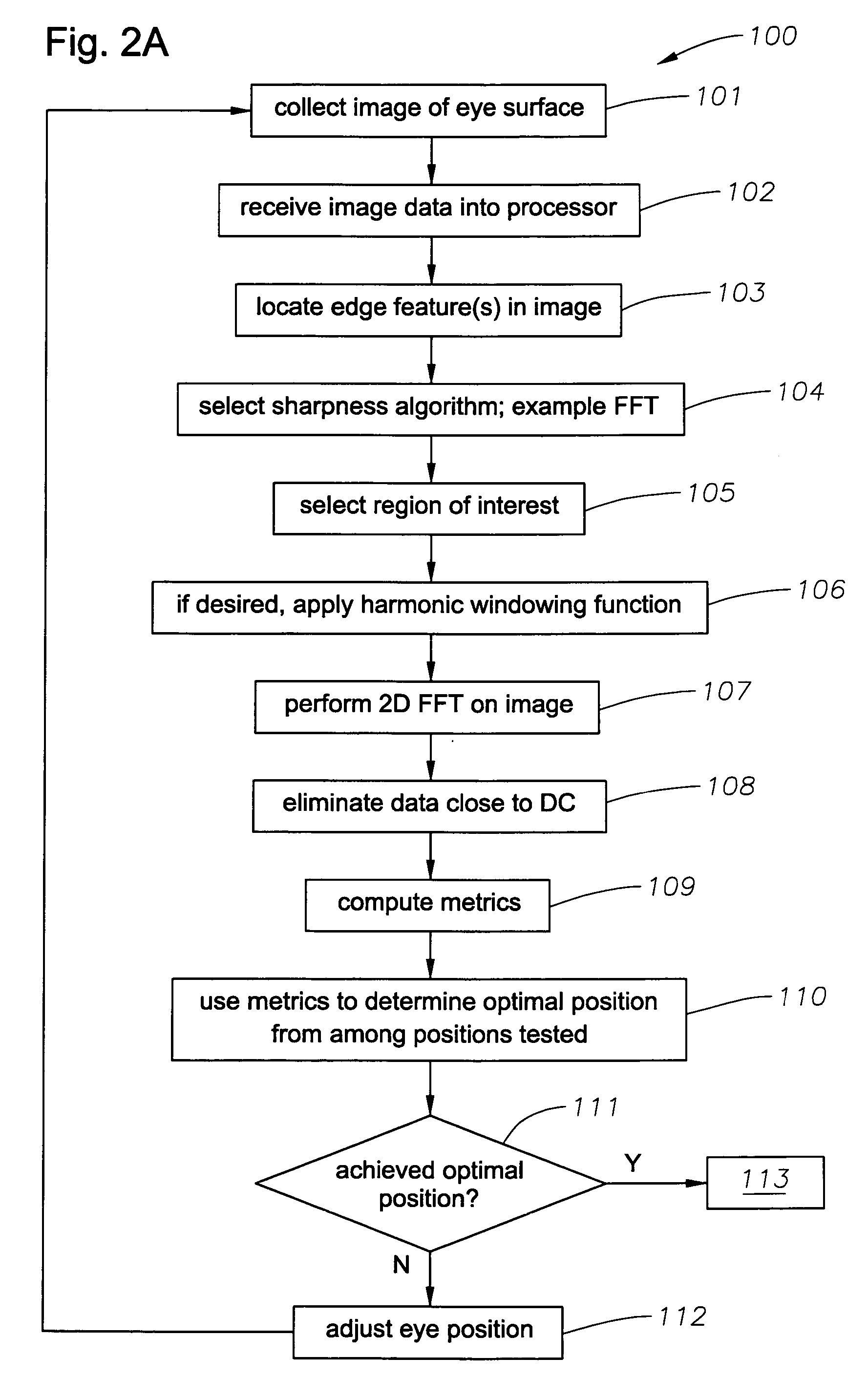Ophthalmic device positioning system and associated methods
- Summary
- Abstract
- Description
- Claims
- Application Information
AI Technical Summary
Benefits of technology
Problems solved by technology
Method used
Image
Examples
Embodiment Construction
[0018] A description of the preferred embodiments of the present invention will now be presented with reference to FIGS. 1-6C. An exemplary embodiment eye positioning system 10 is depicted schematically in FIG. 1, and an exemplary method 100, in FIGS. 2A and 2B.
[0019] An embodiment 100 of the method for determining an optimal (therapeutically effective) position of an eye relative to an ophthalmic device 11 comprises the step of receiving data into a processor 12 (block 102). The data comprise an image of a surface of an eye 13 that has been collected with, for example, a video camera, digital camera, still camera or frame grabber 14, in communication with the processor 12. The image is collected with the eye at a first position relative to the ophthalmic device 11 (block 101). Ophthalmic device 11 can be, for example, and without limitation, a femptosecond laser microkeratome, a treatment laser, such as an excimer laser, an aberrometer, or any other ophthalmic device as will be kn...
PUM
 Login to View More
Login to View More Abstract
Description
Claims
Application Information
 Login to View More
Login to View More - R&D Engineer
- R&D Manager
- IP Professional
- Industry Leading Data Capabilities
- Powerful AI technology
- Patent DNA Extraction
Browse by: Latest US Patents, China's latest patents, Technical Efficacy Thesaurus, Application Domain, Technology Topic, Popular Technical Reports.
© 2024 PatSnap. All rights reserved.Legal|Privacy policy|Modern Slavery Act Transparency Statement|Sitemap|About US| Contact US: help@patsnap.com










